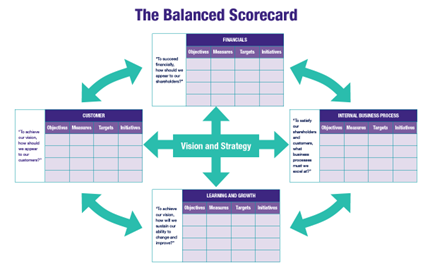This topic covers the last stage in operational plan management. Once the plan has been developed, the performance indicators defined and the human and physical resources obtained, the operational plan is set in motion.
The last phase—monitoring and reviewing operational performance—is an important part of the plan. It ensures that the plan functions effectively and addresses any problems that might arise.
Organisations benefit greatly from this monitoring because it tracks the key performance indicators that measure how well the organisation is doing.
By the end of this topic, you will understand:
- The importance of monitoring and control systems for evaluating the success of an operational plan
- The seven steps to successful monitoring and evaluation of an operational plan
- The role of identifying and assessing issues for the ongoing success of an operational plan
- The RADAR process for problem-solving issues identified with an operational plan
- The role of coaching and mentoring within operational planning.

What do we mean by monitoring and control systems?
Monitoring and control systems provide users with the most current information and ability to effectively, efficiently and reliably operate and manage systems for which they are responsible.
These systems provide support for a wide variety of monitoring and analytical functions.
Monitoring and control processes oversee all the tasks and metrics necessary to ensure that the approved project is within scope, on time and on budget, so the project proceeds with minimal risk.
In this lesson, we will take a look at the monitoring and control systems, the tools used and evaluating the progress.
By the end, you will be able to:
- Outline the role of monitoring and control systems for operational plan evaluations
- Describe the monitoring and control review process/cycle
- List the four (4) steps in monitoring operational planning for evaluation.
Performance systems for monitoring and control
Performance systems and processes are monitored to assess progress in achieving profit or productivity plans and targets.
For this purpose, managers need to be able to monitor a number of aspects of the business. Exactly what is monitored will depend on the type of business. Monitoring gives the organisation knowledge and control over the activities that are undertaken to produce the product or service.
We will take a look at the following methods in monitor and control systems:
- The monitor and control cycle
- Monitoring the plan
- Evaluating progress
- Measuring data
- Tools for monitoring
- Balance scorecard
- Benchmarking.
The plan, at best, is an approximation of what you hope and expect will happen.Dr. Mike Clayton
The monitor and control cycle
- Plan - Determine and execute the plan
- Monitor - Access progress
- Review - Compare progress against desired outcomes
- Control - Take remedial if necessary
Watch
Watch the following 2-minute video to learn more about the monitor and control cycle:
Monitoring the plan
- STEP 1. Schedule a regular time to monitor progress; for example, once per day, twice weekly or once per week.
- STEP 2. Record progress and problems in the plan. Update progress and problems in the plan.
- STEP 3. If actions are delayed, take appropriate remedial action immediately. Allocate more resources, or re-structure action timelines.
- STEP 4. Set up communication channels to:
- Gather updates from team members on progress. Team members provide regular updates on progress.
- Distribute updates to team members to ensure that they have an understanding of the progress.
Evaluating progress
When evaluating the progress of an operational plan, it is important to ask the right questions at regular intervals.
For example:
- Has each task been implemented correctly?
- Has each task been completed on time?
- Has the desired outcome resulted from the completion of each task?
- Is more time required?
- Are more tasks or resources required?
- Does the plan need to change?
Progress is impossible without change, and those who cannot change their minds cannot change anything.Bernard Shaw
Measuring data
When monitoring processes and resources to make sure they are positively contributing to the goals of the operational plan, one must track the data.
For example, a company wants to find out how customer service is serving its customers. In both the strategic and operational plans, one of the goals is to increase customer satisfaction by 30% within the year.
A company can track customer satisfaction through feedback and surveys. The data from these tools can be either qualitative or quantitative.
Review the diagram below to learn more about the difference between qualitative and quantitative data:
| BASIS FOR COMPARISON | QUALITATIVE DATA | QUANTITATIVE DATA |
|---|---|---|
| Definition | Qualitative data can’t be given as a number | Quantitative data can be given as a number or can be quantified |
| Can data be counted? | No | Yes |
| Data type | Words, images, objects, observations and symbols | Statistics, numbers |
Watch
Watch the following 2-minute video to learn more about the difference between qualitative and quantitative data:
Tools for monitoring
To make monitoring more manageable, there are tools available that help. Some of the following will be familiar to you:
- Network diagrams
- Gantt charts
- Pert chart
- Balanced scorecard
- Benchmarking.
Example
The information you have been gathering in your Gantt chart can be used to monitor and control performance.
Balanced scorecard
A balanced scorecard is a strategy tool that allows an organisation’s objectives to be tracked and monitored.
Objectives are drawn from the mission and vision of the organisation.
A balanced scorecard is broken down into four perspectives:
- Financial
- Customer Value
- Internal Business Processes
- Organisational capacity for Learning and Growth.
Review the diagram below to learn more about each perspective:

Watch
Watch the following almost 7-minute video to learn more about balanced scorecards:
Benchmarking
Benchmarking is a process for capturing business performance and measuring it against other organisations to determine gaps.
It is designed to identify areas for improvement so that the organisation can remain competitive.
Watch
Watch the following 5-minute video to learn more about benchmarking:
Check your understanding
Note
Qualitative data is non-numerical and often involves qualities, characteristics, descriptions, or subjective assessments. On the other hand, quantitative data is numerical and involves measurable quantities or counts. ‘Facts’ can refer to qualitative data (such as ‘The sky is blue.’) or quantitative data (such as ‘The temperature is 25 degrees Celsius.’)
Identifying and addressing issues that arise through the evaluation process
To measure the effectiveness of a strategy, you have to examine how it links your objectives to the way you plan to achieve them and the means you plan to use.
A strategy is effective if it uses the resources you allocate according to your plan and delivers the expected results.
But what if, when evaluating the plan, you identify several issues? This is a key component in the evaluation process for operational plans. You need to be able to assess and put in place actions to overcome the issues you identify.
In this section, we will cover how to identify and address issues that arise and the tools that can be used to find solutions.
Three (3) categories of issues you might identify
Identifying and addressing issues is an important part of the monitor and control cycle of a plan.
In the workplace, problems and issues arise daily. Consequentially, there are constant challenges to finding solutions for problems in an organisation.
There are three (3) categories of workplace problems:
- Deviation problems—occur when the team is falling short of expected outcomes or targets
- Improvement problems—occur when the team is working well but needs to improve on some aspects
- Open-ended problems—occur when challenges require creating thinking to solve.
The road to success and the road to failure are almost exactly the same.Colin Davis
RADAR: A Problem-solving technique
Even though problems and issues exist in organisations, finding solutions can be more efficient if a process is applied. One technique you can use is the RADAR Process.
RADAR process for problem-solving:
- Request the what and why of the issue
- Ask for further details to identify specifics
- Develop ideas to solve the issue
- Agree on the actions to be implemented to solve the issue
- Review the main points of the actions and follow-up to ensure issue is solved.
Controlling issues you identify
Once you identify an issue, you need to explore how you will overcome it.
There are several ways you may approach this and they will usually be dependent on the resourcing available, and the magnitude of the issue to be resolved. Whatever the issue is, it is important you respond proactively to deal with it in the most efficient way possible.
Below are some of the steps you might work through in order to address the issue/s you identify:
- Assign more resources
- Assign more time
- Increase budget
- Increase scope
- Mentoring and coaching
- Communicate better
- Provide better leadership
The role of the operations manager
The role of the operations manager is mostly that of analysing and communicating when it comes to identifying and resolving issues. An operations manager may:
- Act as a liaison between team members and senior management
- Ensure that senior management receives regular reports
- Communicate issues to senior management
- Convey issues to team members
- Make recommendations on variations
- Offer recommendations to address and resolve identified issues.
Check your understanding

The role of coaching and mentoring within operational planning
Coaching and mentoring can be a vital component for the ongoing success of an operational plan. They are valuable processes that can help managers and staff alike to understand their roles and progress with their own actions and delivery for success.
There are key differences between the two:
- Coaching is more performance-driven, designed to improve the professional’s on-the-job performance
- Mentoring is more development-driven, looking not just at the professional’s current job function but beyond, taking a more holistic approach to career development.
In this section, we will cover the importance of coaching and mentoring from a manager.
Leadership mentoring and coaching
Human relations are an integral part of a business. So, when issues or problems arise, and a project timeline is no longer on track, the operations manager will need to examine if there is a need for conversations with team members.
The manner in which a project or operations manager coaches or mentors another employee affects all aspects of the business.
Watch
Watch the following 2-minute video to learn more about leadership mentoring and coaching:
My mistakes have been my greatest mentors.Steve Maraboli
The process of coaching
Put simply, coaching is a process that aims to improve performance and focuses on the present rather than on the distant past or future.
In coaching, fundamentally, the coach is helping the individual to improve their own performance: in other words, helping them to learn.
The coaching process will change depending on the individual and their situation, as well as the support they need to continue to grow and develop.
Review the following four (4) steps to learn more about the coaching process:
- High potential employees
- Mentoring and coaching may be given to individuals to check that they perform to their full potential in their organisational role.
- This benefits the organisation as well as the individual
- These are development tools that are typically offered only to those employees who are seen as having high potential; it is very time consuming for the person doing the mentoring or coaching.
- Providing continuous support
- Mentoring and coaching mean giving feedback to an individual on a continual basis rather than merely twice a year in a performance review
- This enables employees to correct errors quickly and to keep them focused on fulfilling their potential.
- Guidance of an experienced Mentor
- This type of guidance is usually given by someone the employee respects and has extensive experience and success.
- The experienced person is a role model and a resource for bouncing ideas off.
- This allows the high-potential employee to take considered risks and make adjustments to their work with relative safety as they are under the guidance of an experienced mentor.
- Motivating potential
- Those selected as mentees are typically given activities and projects outside their normal job role and ability level.
- This situation allows them to broaden their experience, better enabling their potential to be fulfilled.
Mentor and coach others whenever you can. Your teaching will deepen your own learning.Lee J. Colan
Coaching plans
A coaching plan is a strategic tool and a structured roadmap that guides the coaching process as you collaborate with the individual team members to train and motivate employees and improve their performances.
Coaching plans are a great way to establish long-term and short-term goals for employees while encouraging them to strengthen their skills and expertise. Managers, mentors or other coach figures can build these plans to help less experienced professionals improve.
A typical coaching plan involves working closely with employees to establish both short- and long-term career goals. You can then conduct regular meetings to check on their progress and to find areas in which they can further improve. A strong coaching plan involves providing this employee with positive encouragement and feedback to motivate them to continue performing effectively.
To create an effective coaching plan:
- Establish the employees' strengths
- Locate any areas of improvement
- Ask the employee to evaluate their performance
- Determine any obstacles in the way of the employee's success
- Provide potential solutions to help the employee overcome the obstacle
- Develop short-term and long-term goals
- Build an action plan for meeting these milestones
- Schedule dates and times to regularly follow up on their progress
Example
Here's an example of a written coaching plan for you to follow when developing one for your team members:
Employee's name: Jessica Tyler
Employee's title: Marketing content writer
Date: 8/24/2022
Strengths: Jessica is proficient at crafting well-written content, following search engine optimization guidelines and brainstorming unique and original ideas.
Areas of improvement: Jessica can work on meeting deadlines and creating more content pieces each month.
Obstacles in the way of improvement: Difficulty understanding complex subject matters and the industry she's writing about.
Solutions provided: Jessica plans to spend an hour each day researching industry trends. Management will fund conferences and seminars that teach on the difficult subject matters Jessica regularly writes about.
Goal to achieve: Increase the conversion rates of the website's blog page by 20% over the next six months.
Action plan for goal: Jessica plans to submit and post five educational industry blog articles to the website each week.
Date of next goal progress meeting: 12/10/2022
Use the following questions to check your knowledge. You can check the correct answer by clicking on the 'Answer' button:
Q1. True or false: The manner in which a manager coaches or mentors another employee affects all aspects of the business.
The way a manager coaches and mentors employees impact employee’s performance and productivity, morale and satisfaction, team collaboration and communication, talent development and succession planning, leadership development, innovation and adaptability, overall organisational culture.
Q2. What are the steps of the monitor and control cycle?
- Plan – determine and execute the plan.
- Monitor – Access progress.
- Review – Compare progress against desired outcomes.
- Control – Take remedial action if necessary
Q3. What is meant by benchmarking?
Q4. What are the three (3) categories of a workplace problem?
- Deviation problems – occur when the team is falling short of expected outcomes or targets.
- Improvement problems – occur when the team is working well but needs to improve on some aspects.
- Open-ended problems – occur when challenges require creative thinking to solve.
Q5. What is the difference between coaching and mentoring?
Mentoring is more development-driven, looking not just at the professional’s current job function but beyond, taking.
